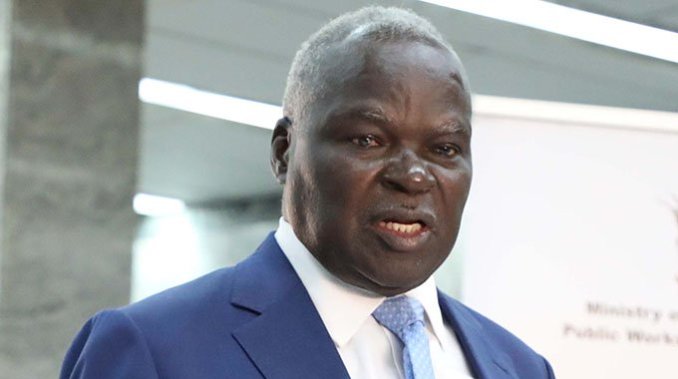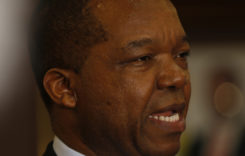Local Government Minister July Moyo
By Nevanji Madanhire
Zimbabwe’s devolution programme is largely founded on the principle of empowering provincial government councils to spearhead economic and social development projects in their areas by leveraging on local resources.
The emphasis is on economic development and not political power, which remains in the hands of central government, under the country’s unitary state structure.
Legal framework
Devolution was adopted as a key component of the new Constitution of Zimbabwe of 2013 and is recognized as one of the Founding Values and Principles to the Constitution.
Chapter 14 of the 2013 Constitution provides for provincial and local governments. It is the only Chapter of the Constitution that has a preamble of its own. The preamble reads:
Whereas it is desirable to ensure: (a) the preservation of national unity in Zimbabwe and the prevention of all forms of disunity and secessionism; (b) the democratic participation in government by all citizens and communities of Zimbabwe; and (c) the equitable allocation of national resources and the participation of local communities in the determination of development priorities within their areas; there must be devolution of power and responsibilities to lower tiers of government in Zimbabwe.
Devolution was seen as a necessary vehicle for doing away with the over-centralized system of government, for deepening democracy, promoting locally driven development, improving the delivery of public services, and promoting national integration and peace while recognizing diversity.
How will devolution work?
The 2013 Constitution maintains a unitary form of government, which means central government remains the main centre of power, although it devolves some power to lower structures.
In the old Lancaster House Constitution, the levels of government were horizontal and were called “levels of administration”; each level was defined as an institutional setting that supports, administratively, the implementation of governmental policies in the regions, at the local level. These levels of administration did not make policies but only implemented them.
However, the new Constitution seeks to organize government vertically at multiple levels; national, provincial and local.
Each level is defined as a “tier of government” – “the part of the hierarchy through which state power is employed at a certain place in the vertical order of a country”.
A tier of government is endowed with the power to make policies and also implement them.
Composition of provincial and metropolitan structures
The requirement for devolution in the preamble is further given effect by section 264(1). The provision provides that “whenever appropriate, governmental powers and responsibilities must be devolved to provincial and metropolitan councils and local authorities which are competent to carry out those responsibilities efficiently and effectively.”
The Constitution recognises 10 provinces, namely; Mashonaland Central, Mashonaland East, Mashonaland West, Manicaland, Masvingo, Midlands, Matabeleland North, Matabeleland South, Bulawayo and Harare.
Therefore, the provincial tier of government is to be constituted by eight provincial councils and two metropolitan councils namely, Bulawayo and Harare.
The local tier of government – local government – consists of urban and rural local authorities.
Provincial and metropolitan councils are to be constituted by a combination of elected and appointed officials.
A total of 10 directly elected officials, all members of parliament, and the president of the council of chiefs and his deputy, make up the provincial council in the 8 provinces.
The metropolitan council is constituted by all members of parliament, mayors, chairpersons, deputy mayors and deputy chairpersons in the province.
The Constitution requires provincial and metropolitan councils to undertake social economic development in their respective provinces, including:
- planning and implementing social and economic development activities in its province;
- coordinating and implementing governmental programmes in its province;
- planning and implementing measures for the conservation, improvement and management of natural resources in its province;
- promoting tourism in its province, and developing facilities for that purpose;
- monitoring and evaluating the use of resources in its province; and
- exercising any other functions, including legislative functions, that may be conferred or imposed on it by or under an Act of Parliament.
Socio-economic development encompasses social related services, such as the provision of health, education and sanitation, and economic orientated activities including tourism, natural resources extraction and job creation.
Composition of local government structures
The Constitution makes provision for two categories of local authority: urban local authorities, for urban areas; and rural local authorities, for rural areas to be governed by councils constituted by democratically elected councillors.
Section 276(1) of the 2013 Constitution provides generic powers whose boundaries or depth are subject to interpretation. The provision states that:
“Subject to the Constitution and any Act of Parliament, a local authority has the right to govern, on its own initiative, the local affairs of the people within the area for which it has been established, and has all the powers necessary for it to do so.”
Section 276(2) provides that “an Act of Parliament may confer functions on local authorities, including – (a) a power to make by-laws, regulations or rules for the effective administration of the areas for which they have been established; (b) a power to levy rates and taxes and generally to raise sufficient revenue for them to carry out their objects and responsibilities.”
Relations with central government
As stated earlier, The 2013 Constitution maintains a unitary form of government, which signifies that the centre of power remains central government.
The tiers of government remain subordinate to the government in Harare; so local units exercising devolved powers are not on a par with the central government.
While not occupying the same position as the central or national government, devolved units do however enjoy a certain level of autonomy from the centre, which takes many forms but is usually political, fiscal or administrative. But it is important to note that in the new Constitution, central government cannot arbitrarily abolish the lower tiers for any reason without an Act of Parliament. (Emerging debates about, and prospects for, devolution in Zimbabwe by Tinashe C Chigwata, January 2019 https://zimlii.org/content/devolution-demystified-emerging-debates-and-prospects-devolution-zimbabwe-discussion-paper)
Budget and financial support
The 2013 Constitution stipulates equitable revenue sharing among the tiers of government where fiscal resources are transferred from the national government to provincial and metropolitan councils and local authorities. Section 301(1) of the Constitution directs Parliament to enact legislation providing for conditional and unconditional grants to provincial and metropolitan councils and local authorities.
The Constitution requires the allocation of “not less than five per cent of the national revenues raised in any financial year” to provincial and metropolitan councils and local authorities. This is supplemented by other forms of intergovernmental grants that the national government may allocate to provinces and local government from time to time.
Provincial and local governments have limited taxing powers and tax bases as the collection of certain taxes, licences or charges have been recentralized.
The 2019 national budget introduced an “interim formula” of sharing revenue among provinces in the 2019 financial year. The formula involves the consideration of three main components:
- Population profile;
- Poverty profile; and
- Infrastructure quality and deficit.
Local resource management
Addressing a devolution conference early September 2019, Andrew Bvumbe, a senior director in the Ministry of Finance and Economic Development, said the development plans should be guided by National Planning Document, with the current one being the Transitional Stabilisation Programme (October 2018 – December 2020). (The Herald, September 5 2019, Midlands lays out devolution framework, https://www.herald.co.zw/midlands-lays-out-devolution-framework/)
“Implementation of devolution emphasizes regional economic development. This, therefore, entails the development and tracking of economic activities at district and provincial levels; hence the need for developing and monitoring of Gross Domestic Product (GDP) statistics at district and provincial levels,” he said.
Provinces will be required to co-ordinate and monitor the development of such statistics in the respective jurisdictions with technical assistance of the relevant Government agencies, according to the report.
The national GDP will then be disaggregated to the provincial level for competitiveness purpose.
The provincial management of the economy entails working closely with the private sector to capture data and understanding their requirements, Bvumbe said.
Do you want to use our content? Click Here












